Genus Argusianus Higher classification Argusianus | Phylum Chordata Scientific name Argusianus argus Rank Species | |
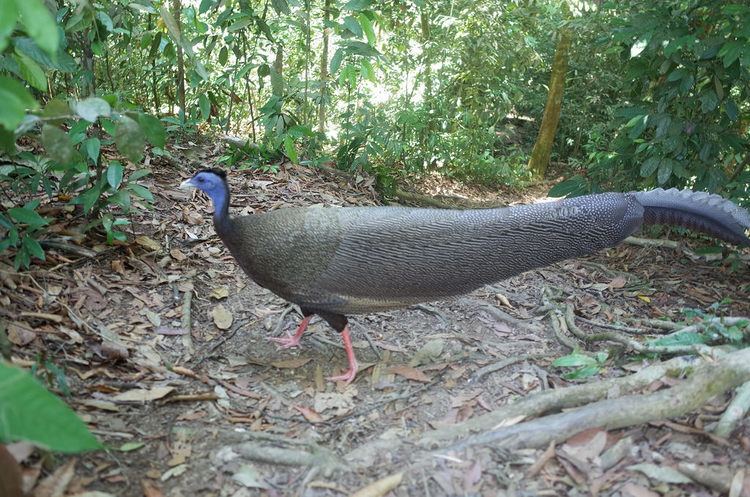 | ||
Similar Argusianus, Crested fireback, Peacock‑pheasant, Crested argus, Malayan peacock‑pheasant | ||
Great argus pheasant mating dance argusianus argus
The great argus (Argusianus argus) is a species of pheasant.
Contents
- Great argus pheasant mating dance argusianus argus
- Taxonomy
- Double banded argus
- Description
- Behaviour
- Distribution and habitat
- Conservation
- References
Taxonomy

The scientific name of the Great Argus was given by Carl Linnaeus in reference to the many eyes-like pattern on its wings. Argus is a hundred-eyed giant in Greek mythology. There are two subspecies recognized: Nominate argus of the Malay peninsula and Sumatra, and A. a. grayi of Borneo. William Beebe considered the two races to be distinct species, but they have since been lumped.
Double-banded argus
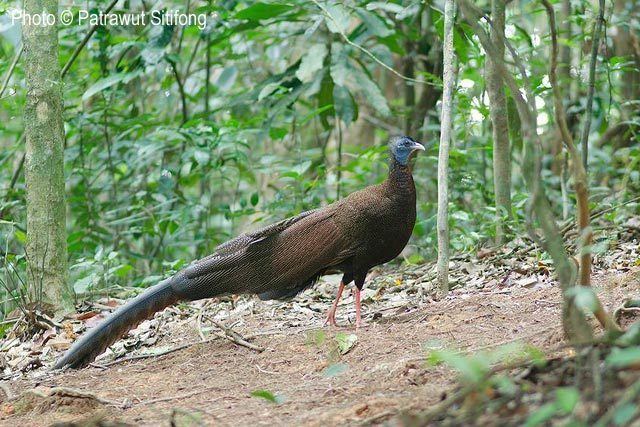
The double-banded argus, Argusianus bipunctatus, was long considered a potential second species. pheasant which is known only from the portion of a single primary flight feather. It was described in 1871 from this feather piece, found in a millinery shipment imported to London. Its origin was hypothesized to be from Java, Indonesia or Tioman Island of Malaysia, because of the great argus' absence from these locations. Parkes (1992) vehemently rejected the "species" validity and argued that the double-banded argus almost certainly represents a mutant form of the great argus. The IUCN, following the precautionary principle, listed this taxon as extinct until 2012. It was removed from the IUCN Red list because the IOC has removed this species from its list of valid bird taxa in 2011. While the feather is indeed quite distinct, it represents a fairly simple divergence: The entirely asymmetrically-pattern vanes are instead near-symmetrical and both bear the darker brown shaftward area with innumerable whitish speckles. The shaft is thinner than usual and the feather would probably not have been useful for flight.
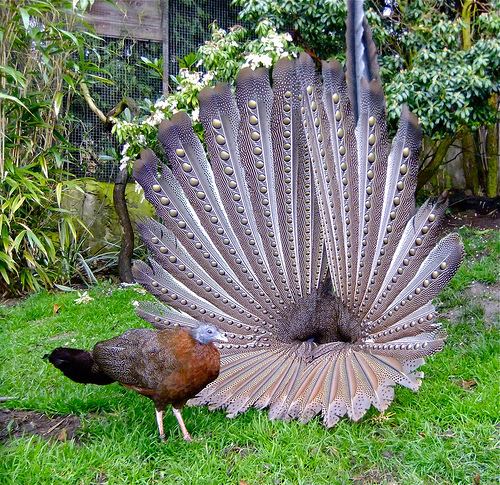
Nothing similar has come to notice ever since, and as the feather piece is not a composite of two feather halves glued together but a natural (albeit peculiar) specimen, a hoax or fake can be ruled out. Nonetheless all conjecture that has been built around the feather piece, all that can be said is that at some time around 1870 an argus pheasant was shot in an unknown location which bore at least one such feather. Even if this one known individual was the last remnant of a disappearing population, it is hard to believe that only a single feather would have been taken from an unusual specimen of a well-known, often-hunted, and conspicuous bird, and that this single feather would have been then transported elsewhere, to be bundled into a shipment of perfectly normal great argus feathers. The feather is now housed in the British Natural History Museum.
Description
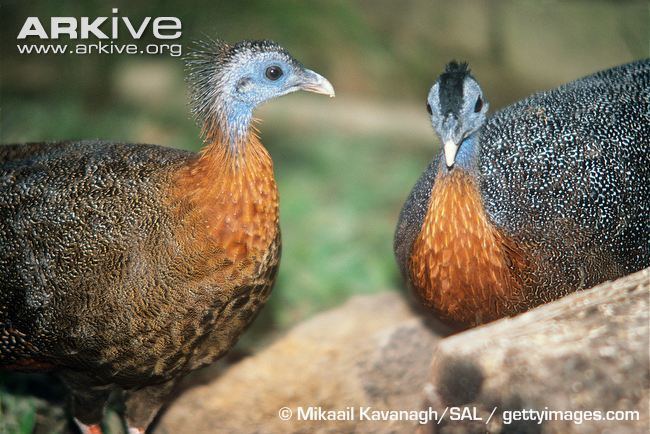
The great argus is a brown-plumaged pheasant with a blue head and neck, rufous red upper breast, black hair-like feathers on crown and nape, and red legs. The male is among the largest of all pheasants. He measures 160–200 cm (63–79 in) in total length, including a tail of 105–143 cm (41–56 in), and weighs 2.04–2.72 kg (4.5–6.0 lb). It has very long tail feathers. The male's most spectacular features are its huge, broad and greatly elongated secondary wing feathers decorated with large ocelli. The female is smaller and duller than the male, with shorter tails and less ocelli. She measures 72–76 cm (28–30 in) in total length, including a tail of 30–36 cm (12–14 in), and weighs 1.59–1.7 kg (3.5–3.7 lb). Young males attain adult plumage in their third year.
Behaviour
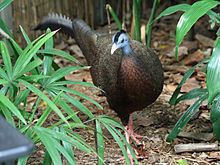
Though the great argus is not as colorful as other pheasants, its display surely ranks among the most remarkable. The male clears an open spot in the forest and prepares a dancing ground. He announces himself with loud calls to attract females, then he dances before her with his wings spread into two enormous fans, revealing hundred of "eyes" while his real eyes are hidden behind it, staring at her.
Despite displays similar to polygamous birds and though the great argus is thought to be polygamous in the wild, it is actually monogamous.
It feeds on forest floor in early morning and evening. Unusual among Galliformes, the great argus has no oil gland and the hen lays only two eggs.
Distribution and habitat
The great argus is native to the jungles of Borneo, Sumatra and the Malay Peninsula in southeast Asia.
Conservation
Due to ongoing habitat loss and to being hunted in some areas, the great argus is evaluated as Near Threatened on the IUCN Red List. It is listed on Appendix II of CITES.
